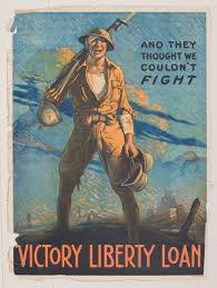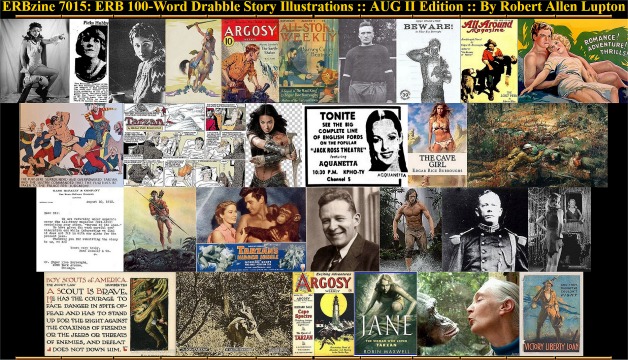
Official Edgar Rice Burroughs Tribute and Weekly Webzine Site Since 1996 ~ Over 15,000 Webpages in Archive Volume 7015a 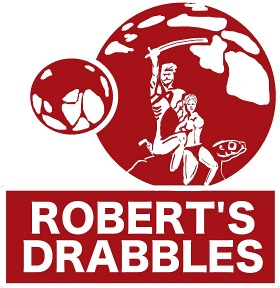 |
ERB 100-Word Drabbles
AUGUST II Edition :: Days 16-31
See Days 1-15 at ERBzine 7015
by Robert Allen Lupton
With ERBzine References by Bill Hillman
ACQUA'S CORNER
August 16, 2004: On this day, the actress, Aquanetta, passed away of Alzheimer's complications in Ahwatukee, Arizona at the age of 83.
Born as Mildred Davenport in Ozone, Wyoming in 1921, Aquanetta was a movie actress of genre, mostly jungle, motion pictures. She was nicknamed the "Venezualan Volcano" by Universal Studios, although she was of Arapaho decent. She was often seen in her trademark long black braids and beautiful silver and turquoise jewelry. She starred in Tarzan and the Leopard Woman (1946) and also had roles in Arabian Nights (1942), Jungle Woman (1944), Dead Man's Eyes (1944), Lost Continent (1951), and The Legend of Grizzly Adams(1990).
In the 1950s, Acquanetta moved to Phoenix and married Jack Ross, the owner of a local car dealership. She achieved local celebrity status by appearing in numerous ads for her husband's business. She also had her own TV program, "Acqua's Corner”, which accompanied the Friday Night Movies. Acquanetta authored a book in 1974 called "The Audible Silence", a fine compilation of poems about life, love, and Indian jewelry.
“Acqua’s Corner” is today’s Edgar Rice Burroughs inspired drabble.
“So, Mrs. Ross, your husband has agreed to sponsor Friday Night Movies, but only if you’re the hostess.”
“That’s the deal. I’ll be like that Elvira, Mistress of the Dark lady, only smarter and better looking. I pick the films, talk at the breaks, and my husband sells cars.”
“Why “Acqua’s Corner?”
“That really hurts my feelings. I made several movies including “Tarzan and the Leopard Woman.” My stage name is Aquanetta.”
“Isn’t Aqua Net a hairspray?”
“Really, hairspray. How old are you, twelve? I bet you can’t even name the Three Stooges. Thank goodness I write my own material.”
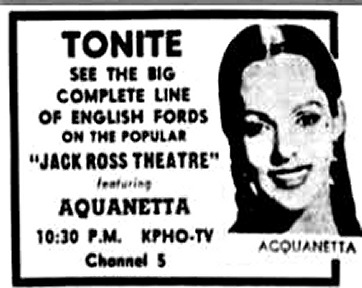
FUN DATE
August 17, 1914: On this day, Edgar Rice Burroughs finished writing “The Cave Man,” the second half of the novel, “The Cave Girl.” All-Story Weekly published it in four parts starting March 31, 1917. The first edition by A. C. McClurg was released in March of 1925 and Gosset & Dunlap issued the initial reprint edition the following year. “Fun Date” is today’s Edgar Rice Burroughs inspired drabble.
Waldo Emerson Smith-Jones’ mother, greeted him and Nadara on board the Pricilla. “I trust you’ve been safe, my son.”
“Yes, mother. I became king of a tribe of cavemen, fell in love with Nadara, and won a war between tribes. After that, we abandoned the cavemen, but she was captured by cannibals.”
“Cannibals?”
“Yes, they made Nadera their goddess. I was stranded on a small island, built a boat, and befriended Chinese pirates who helped save her from the cannibals. It’s really been quite exciting.”
“Well, Waldo, my boy. You’ve sure learned how to show a girl a good time.”
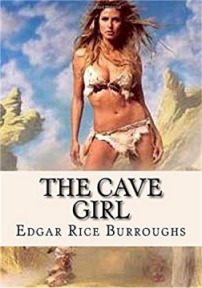
COME BACK WHEN YOU GROW UP GIRL
August 18, 2012: On this day Dr. Jane Goodall was the speaker at the Tarzan Centennial celebration in Tarzana, California. The three-day centennial event featured the introduction of “Jane, the Woman Who Loved Tarzan” by Robin Maxwell.
The special guest speaker at the dinner Aug. 18 was Dr. Jane Goodall, founder of the Jane Goodall Institute. Goodall credited Burroughs' "Tarzan of the Apes" novel and other stories as the source of her lifelong interest in primates. She began reading Tarzan stories when she was eleven.
“Come Back When You Grow Up Girl” is today’s drabble.
Young Jane Goodall finished the novel “Tarzan of the Apes” and immediately started the second book, “The Return of Tarzan.” The copy had a slightly torn dust jacket and she took it off the McClurg edition and threw it in the trash.
At dinner, her father asked, “Did you finish reading Tarzan?”
“Yes, that stupid girl with my name stayed in America.”
“Relax, Dear. I’m sure she’ll come to her senses.”
“I bet she will. What girl wouldn’t choose to live with gorillas and chimpanzees? I’m going to do that when I’m grown.”
“Of course you will. Eat your carrots.”

GOOD WITH THE BAD
August 19, 1877: On this day the artist, Frank Schoonover, was born in Oxford, New Jersey. He was a prolific artist, credited with over 5000 paintings and a frequent contributor to books and magazines. In addition to illustrating “A Princess of Mars” and “Gods of Mars,” he drew covers for Clarence Mulford’s Hopalong Cassidy stories.
Schoonover received national attention in 2011 when his painting of World War I hero Alvin C. York was returned to York’s home state of Tennessee. Businessman and philanthropist Allan Jones of Cleveland, Tennessee purchased the painting on Veteran’s Day from the Blakeslee Gallery in Wellington, Florida.
He launched his career with a commission for four illustrations in the book, “A Jersey Boy in the Revolution’ in 1900 and painted actively until the 1960s. Think about that. More than 5000 paintings in 60 years, or at least 42 paintings a year – a painting every eight days. The painting attached to this post is his famous painting of Sergeant York.
Today’s Edgar Rice Burroughs inspired drabble is “Good With The Bad.” This is number 442 in this series.
Frank told Howard Pyle that he was leaving art school. “I’ve received a commission to paint illustrations for a historical fiction book about the American Revolution.”
“I wish you the best. Painting covers pays regularly. You can sell the paintings twice. Magazines and books buy the rights and when you get the painting back, you can sell the original. You have to work fast. They don’t give you much notice. Every day’s a deadline.”
“I can paint faster than writer’s can write. The hardest part is reading the stories. Some are dreadful.”
“I know, Frank. I graded all your paintings.”
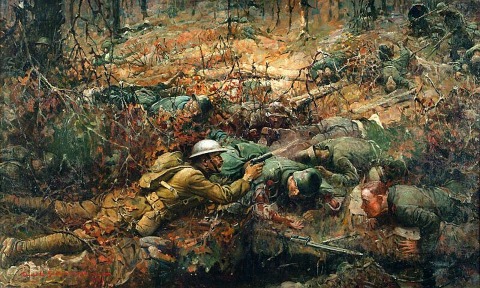
THERE'S A MAP FOR THAT
August 20, 1913: On this day, publisher Rand McNally rejected “Tarzan of the Apes.” The editors said, “After careful consideration, but while it was interesting, we find it does not fit in with our plans for this present year." This form rejection letter is still in use. I’ve received a few dozen times.
Rand McNally published “The Real Mother Goose” in 1916 and it is still one of the bestselling children’s books of all time. After Tarzan became a success, Rand McNally published Tarzan coloring books. I guess they eventually found the time to revise their plans.
“There’s A Map For That” is today’s Edgar Rice Burroughs inspired drabble.
“I really like this Tarzan book by that Burroughs fellow. You sure you want to reject it, the magazine version sold extremely well. I understand he’s already written a sequel.”
“We don’t publish adventure stories. We publish maps.”
“Boss, you’ve got people working on “The Real Mother Goose.”
“You bet I do. Those illustrations by Blanche Fisher Wright and Milo Winter are amazing. People buy children’s books. Maybe, we can help Mr. Burroughs find a way to rewrite the story for children.”
“Find a way, Boss, you mean like draw him a map?”
“Sure, why not. That’s what we do.”
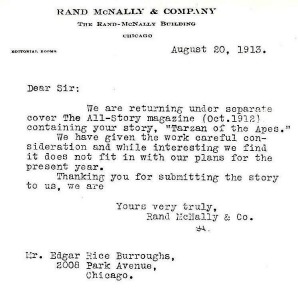
YOU SAY POTATO
August 21, 1933: On this day, Hulbert Burroughs was graduated from Pomona College. He enrolled in and attended the University of New Mexico summer school of archaeology at Jemez Springs, New Mexico. Special thanks to my friends who introduced me to that town over 30 years ago.
Jemez Springs has a population of about 400. It is near the Jemez Pueblo, the Jemez Soda Dam, and the Jemez Hot Springs. Many people think the best thing in town is the historic Los Ojos Restaurant and Saloon, home to the Famous Jemez Burger. Definitely worth the trip. Jemez Pueblo pottery is distinctive and collectible.
“You Say Potato” is today’s Edgar Rice Burroughs inspired drabble, with a tip of the hat to Hulbert Burroughs.
“Sure, it’ll cost you twenty-five cents a mile. Call it ten bucks. What’s the town?"
Hulbert Burroughs loaded his stuff in the trunk. “It’s called Jaymass Springs.”
“Never heard of it. You got a map?”
“No, it’s by a pueblo and a hot springs”
“Dude, that’s half the towns in New Mexico. Spell it.”
“J-E-M-E-Z.”
“Got it. Hey Miss.”
“I don’t see any ladies.”
“No, that’s how you say it. Haymiss Springs.”
“Yeah, then how do pronounce the name of this place?”
“Airport.”
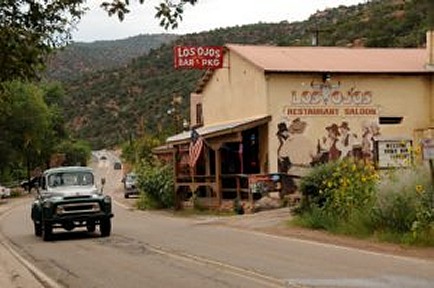
DRESS FOR SUCCESS
August 22, 1947: The last Tarzan book to be published in ERB's lifetime was released. "Tarzan and 'The Foreign Legion' " was never published in a magazine. If you didn't have the hardbound, first edition, then you didn't have the story.
The first edition had a print run of 27,500 and who knows how many were destroyed in the ERB Inc. fire. Later, Ballantine published the paperback and I believe there were three different covers.
The cover by John Coleman Burroughs is excellent. The National Basketball Association logo is a silhouette of Jerry West dribbling and almost mimics the positioning of Tarzan in JCB’s drawing.
Burroughs wrote "Foreign Legion" between June-September 1944 while living in Honolulu, Hawaii and functioning as the oldest correspondent during World War II. His wartime experiences and contacts provided background for the novel.
The Edgar Rice Burroughs inspired drabble today is “Dress For Success.”
Tarzan, Colonel John Clayton, of the RAF flew aboard the American Liberator bomber on a recon mission over Sumatra. The plane was shot down and the crew parachuted out.
Clayton stripped to his accustomed loincloth and searched for the rest of the crew. He quickly located Tony Rosetti.
“Rosetti cringed. “You land on your head? Where’s your clothes? You haven’t gone native?”
“I was born native. This is appropriate clothing for the jungle.”
“Underwear ain’t appropriate clothing outside a man’s home. I’ll make youse a burmoose outa my chute.”
“The jungle is my home and this is how I dress.”
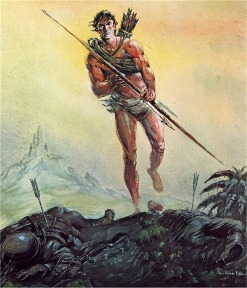
LET ME SLEEP
August 23, 1930: Vera Miles was born on this date in Boise City, Oklahoma, as Vera Ralston, also the middle name of John Coleman Burroughs' wife, Jane. Happy birthday, Vera!
Miles appeared or starred in every kind of movie there was, including many with John Wayne. Focusing on her ERB connections, she played Jill Hardy opposite Gordon Scott in his first role as the apeman in "Tarzan's Hidden Jungle" (1955). She and Gordon were married and the marriage certificate said Werkshul, but they legally had the name changed to Scott, to match Gordon's screen name. She was the mother-in-law of Gabe Essoe, author of "Tarzan of the Movies."
Vera Miles, John Gavin, and Linda Christian, "Tarzan and the Mermaids," were the only Hollywood stars to attend Johnny Weissmuller's funeral in Acapulco in 1984.
The final tidbit is about a scene cut from “Tarzan’s Hidden Jungle.” Tarzan was trying to get some sleep but Vera’s character kept pestering him, so Scott told her to leave him alone, He said, "Miles to go before I sleep."
The Edgar Rice Burroughs inspired drabble today is “Let Me Sleep.” The last line in the drabble is taken directly from the scene cut from “Tarzan’s Hidden Jungle.”
Tarzan rescued Jill Hardy from quick sand and tried to clean the clinging goop from her. Hardy grabbed his roving hands and said, “I need a bath.”
Tarzan said, “Right,” and threw her in a pool.”
That evening, Tarzan tried to sleep, but Jill kept asking questions.”
“Where’s the next town? Do you know where we are?”
“Yes.”
“Why don’t you have clothes? Do you live here? Was that a lion?”
“These are my clothes. Yes and Yes. Quiet, I need to sleep.”
“Can you really talk to the monkey?”
“Yes. Silence, please. I’ve miles to go before I sleep.”
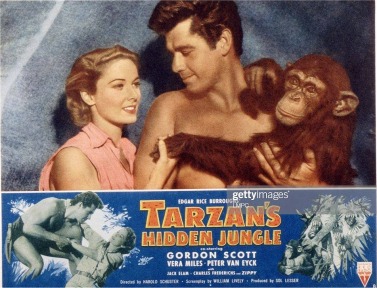
TELL ME A STORY, MR. DUBOIS
August 24, 1899: On this day, Gaylord McIlvaine DuBois was born in Winthrop, Massachusetts. DuBois wrote the Dell and Goldkey Tarzan comic books illustrated by Jesse Marsh from 1946 until 1971.
Gaylord DuBois wrote over 3,000 comic book stories including Roy Rogers, Gene Autry, Red Ryder, Bat Masterson, The Rebel, Bonanza, Trigger, Lassie, Turok, Son of Stone, Raggedy Ann, Tom and Jerry, Santa Claus and Frosty the Snowman. He wrote Big Little Books and a few full-length novels, including "The Lone Ranger," which was credited to him in the first G&D editions but in later editions the book's author was listed as Fran Striker. His "Space Family Robinson," was the forerunner of the TV series, "Lost in Space."
“Tell Me A Story, Mr. Dubois” is the drabble today.
“Thank you for the interview, Mr. DuBois. Did you always want to be a comic book writer?”
“No, comic books didn’t come around until the late thirties. I was almost forty.”
“Weren’t you always a writer?”
“People are rarely always anything, but I wrote big little books during the twenties.”
“I’ve seen those in secondhand stores.”
“Nice. Try reading one. The first thing I wrote was a Lone Ranger novel.”
“The Lone Ranger?”
“I was a deputy sheriff in Wyoming. I preferred to write about gunfights, posses, and catching cattle rustlers than be an active participant. Writers rarely get shot.”
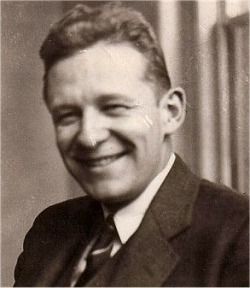
AGE AND SKILL
August 25, 1976: Alexander Skarsgard was born in Vallingby, Stockholm, Sweden on this date. Skarsgard was 40 when he played Tarzan in 2016's "The Legend of Tarzan," but that doesn’t make him the oldest movie Tarzan. Weissmuller was 43 when his “Tarzan and the Mermaid” opened in 1948 and Jock Mahoney was 44 when “Tarzan’s Three Challenges" opened in 1963.
“Age and Skill” is today’s Edgar Rice Burroughs inspired drabble.
Pat and John walked out of the theatre. John said, “Skarsgard
did a good job as Tarzan. He’s old to play Tarzan.”
Pat said, “Weissmuller and Mahoney were older.”
“Yeah, but Skarsgard looks a better at 40 than Weissmuller did a forty-three.”
“Mahoney did all his own stunts at 44. Mahoney was awesome.”
“Pat, you saying Mahoney would be a better Tarzan than Skarsgard. Today – if he was alive?”
Pat thought. “Yes, that’s what I’m saying. Real Tarzans don’t wear long pants. Jocko would need a pretty good makeup crew though.”
“Why.”
“Well, he’d be nearly a hundred years old.”

ON YOUR HEAD
August 26, 1922: Edgar Rice Burroughs received a letter from his literary agent saying, "We have interested the Saturday Evening Post in your work, but they are not willing to make any definite promises until the manuscript is completed." Discouraged, ERB decided to stick with what worked before, and went back to writing fiction.
Earlier in 1922, Burroughs thought about writing about the real-life adventurer, General Lee Christmas. Christmas worked as a train engineer in Louisiana, but he made a mistake and caused a train wreck. He was fired. He became a soldier of fortune in Central America. He led troops (read mercenaries, looters, privateers) in campaigns in El Salvador, Guatemala, Nicaragua and Honduras. A book on ERB's shelf, "Soldiers of Fortune" by Richard Harding Davis, was a fictionalized account of Christmas's adventures. Burroughs wanted to go to Central America and meet Christmas.
ERB wanted a guarantee from a publisher that they would buy the articles, in order to make it worth his while to finance the trip. He didn’t get one and gave up the project.
Christmas was a tough hard leader reputed to chew glass to impress his troops and the opposition. Christmas embezzled money from Guatemala and later became a general in Honduras. Later he was captured by Nicaraguan troops and sentenced to death. For his last request, he asked not be buried, but to be left out for the vultures to eat. “I want them to eat my body and fly over your camp and dump s**t on your heads.” The Nicagaguans were impressed or frightened and let him go. After participating in annual revolutions in one Central American country or another, on whichever side paid the best,
Christmas was hired by the United States Government as a secret agent in 1917. He died in New Orleans in 1924.
The drabble today, “On Your Head,” is inspired by Edgar Rice Burroughs’ fascination with General Lee Christmas.
“I want to hire Lee Christmas to spy for us in Central
America.”
“Can we trust him?”
“Hell, no. That’s why we need him.”
“Qualifications?”
“He’s led a dozen revolutions and stopped as many insurrections.
The man’s rotten to the core, but a winner. Half the El Presidentes owe
him their jobs, but they don’t trust him either.”
“Can we believe his intel?”
“I asked what was happening in Panama. He said the army
is revolting.”
“Yes, it is.”
“He wants us to publish his autobiography.”
“The only Christmas story I’ll pay for will feature a
sleigh and twelve reindeer.”
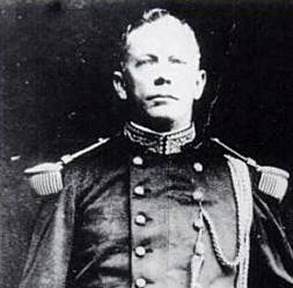
YOU CAN SAY MY NAME
August 27, 1912: Tarzan Day. What do you do on Tarzan Day? According to some sources, which I believe to be incorrect, August 27 is the day the October 1912 "All-Story" Magazine, with the first appearance of Tarzan, hit newsstands. I believe the issue hit the stands on September 10th, the day it was copyrighted.
On this day in 2011, Jean Ann Ewers, known professionally as Eve Brent and Jean Lewis, passed away in Sun Valley, Calif. Eve Played Jane In “Tarzan’s Fight For Life” and “Tarzan and the Trappers.” She appeared in dozens of films including Airport, The Barefoot Executive, The Green Mile, and the Curious Case of Benjamin Button, during her career and she won a Saturn Award for Best Supporting Actress for her work in “Fade to Black.”
During her time in Hollywood, Eve dated Red Buttons, among others.
“You Can Say My Name” is the drabble today.
Gordon Scott and Eve Brent visited on the set of a potential Tarzan television series. Eve asked, “You’ve been busy since “Tarzan’s Fight For Life?”
“Yes, if this doesn’t work out, I’ve got a multi-picture
offer in Europe. You?
“I’m staying busy.”
“You seeing anyone?”
“I refuse ten dates for each one I accept. The Hollywood
wolf pack wants add Jane to their list of conquests.”
Scott nodded. “I get it. The last three women I dated called me Tarzan when I kissed them.
“Yep, my life is like a country song. They never even call me by my name.”
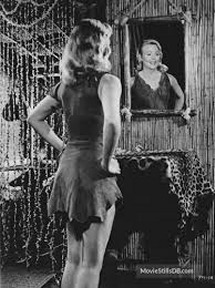
A SCOUT IS BRAVE
August 28, 1923: The first of a three-part series, written by ERB, was published in the Van Nuys News, under the title of "The Origin and History of the Boy Scouts of America," tracing the movement's spread to America. Scouting had reached the San Fernando Valley several months early, thanks largely to the efforts of the Kiwanis Club, and ERB wrote the articles to promote further funding through contributions from the public.
The entire article can be read at www.erbzine.com/mag17/1795.html with added illustrations by Bill Hillman.
“A Scout is Brave” is the Edgar Rice Burroughs inspired drabble for today and number 450th in this series. The words are approximately Burroughs’ opening to the above reference article, reduced to fit this 100 word format.
During the winter of 1899-1900, the Thirteenth Hussars, a division of the English army, commanded by Sir Robert Baden-Powell, and actively engaged in the South African war, quartered in a South African town. The opposing forces laid siege.
They were greatly outnumbered. Sir Baden-Powell mustered the local boys into service to perform support functions, and free all available men to take an active part in the defense.
The day was saved, and Sir Baden-Powell's eyes were opened to the fact that the average boy was capable of greater responsibilities than had been believed.
He began to plan the Boy Scouts.
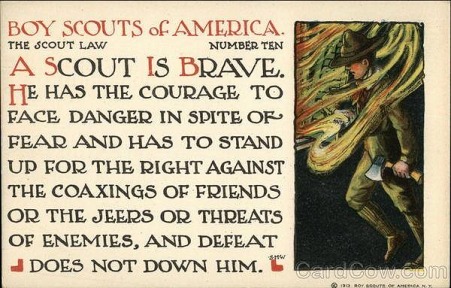
GREAT BOX OFFICE
August 29, 1890: Kamuela C. "Samuel Cooper" Searle was born in Hawaii. Searle played the Korak in the only movie, so far, (actually, a 15-chapter serial) based "The Son of Tarzan."
A frequently illustrated scene shows young Korak rescued by Tantor, who wraps his trunk around a pole, to which Korak is bound. (http://www.erbzine.com/mag5/0589.html)
During filming, the elephant panicked and slammed its burden down. Searle was badly injured and died shortly thereafter. both Gabe Essoe, in "Tarzan of the Movies," and David Fury, in "Kings of the Jungle," report this version
However, there’s a different version, the accurate one. Searle was badly injured, but he didn’t die. Instead, he retired from films and became an artist. A letter from Searle's brother appeared in "The Burroughs Bulletin," stating that Kamuela recovered, but died on February 14, 1924 of cancer.
Scott Tracy Griffin uses the accurate version in his 2016 book, "Tarzan on Film."
“Great Box Office” is today’s ERB inspired drabble.
Kamuela Searle’s loincloth wasn’t comfortable. “It itches. It’s infested with ants.”
The director, Harry Reiver, laughed. “The San Bernardino Mountains are infested, not your costume.”
The crew tied Searle to a wooden post and the animal trainer ordered an elephant to pick up Searle and the post. The elephant went wild and slammed Searle to the ground shattering the post.
The elephant sneezed a trunk full biting insects on the crew. Reiver told the producer, “We’ll tell everyone Searle was killed. It’ll be great box office.”
“Have you written a press release?”
“Almost, just a few bugs to work out.”
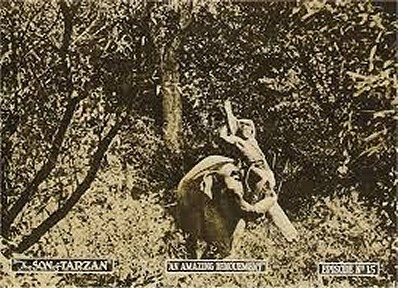
A TIME TO SPEAK
August 30, 1941: Argosy Weekly published part two of “The Quest of Tarzan.” The cover, by Virgil Finlay illustrated the story, "Cape Fear," by Richard Sale. Burroughs began “The Quest of Tarzan” in November 1940. It was published in three parts by Argosy Weekly in 1941.
“Quest” was combined with two other short stories and published in hardcover by Canaveral Press in 1965. “The Quest of Tarzan” was re-titled ‘Tarzan and the Castaways” to avoid confusion with “Tarzan’s Quest.”
“A Time to Speak” is the Edgar Rice Burroughs inspired drabble today.
Janette and Hans de Groote gave him food, water, and a larger cage. Abdullah said, “He is Tarzan. He lives by jungle rules.”
Tarzan regained ability to speak, but he remained silent.
The pirates sacked a British vessel and captured the survivors.
Tarzan escaped and freed everyone. Janette said, “Why
didn’t you say anything earlier?”
“With food, water, and shelter, I had nothing to complain about.”
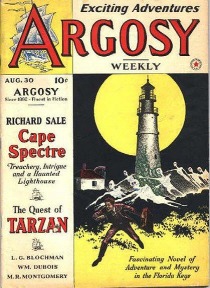
VICTORY LOANS
August 31, 1918:The Army-Navy Journal published an article by Edgar Rice Burroughs, “A Victory Loan: An Appeal to Our Business Sense.” Burroughs gave some patriotic reasons why people ought to help the government, as it needed the cash “or it would not ask us for it.” But beyond that, ERB also thought it was a good investment.
The Victory Loan program was around for a short time and helped pay for World War I. During World War II the U.S. used the term “War Bonds.” while Canada still used the "Victory Bonds" term.
“Victory Loans” is today’s 100 word Edgar Rice Burroughs drabble. The words are his and are excerpted from his article written over one hundred years ago.
“On the other hand, there is in the Victory loan an appeal to our business sense as well as to our patriotism. There is the appeal to self-interest, for the loan is not to be without profit. We are given an opportunity to invest in an absolutely safe security, and we will receive a good rate of interest. If the government cannot raise the necessary funds by the sale of Liberty Bonds, it must do it by direct taxation … if we are taxed we not only will get no interest, but we will never get the principal back again.”
